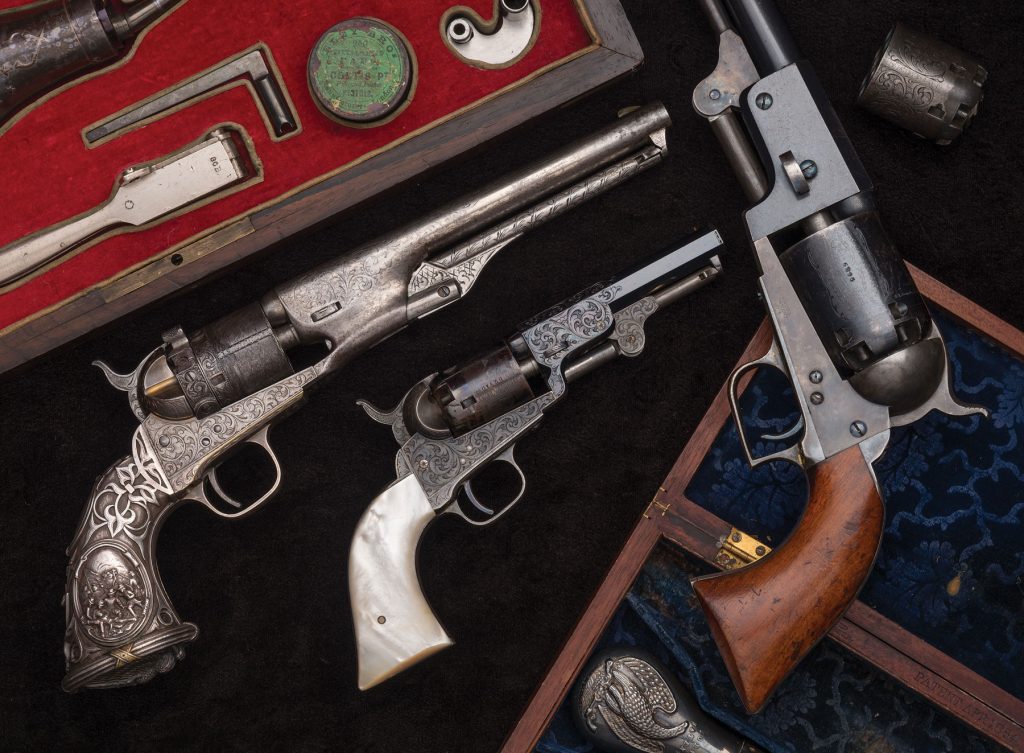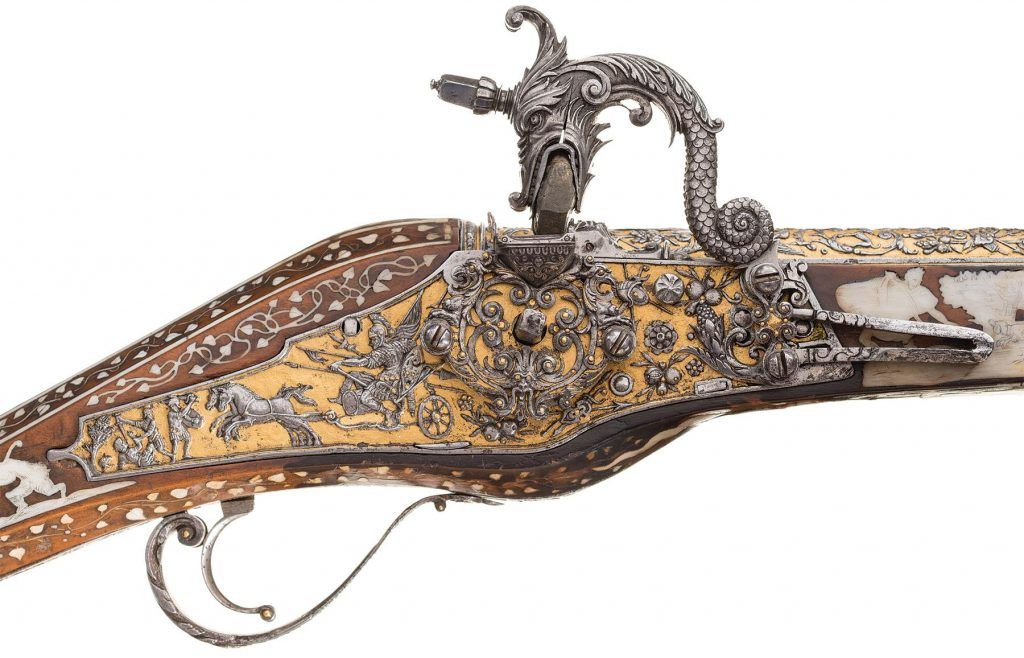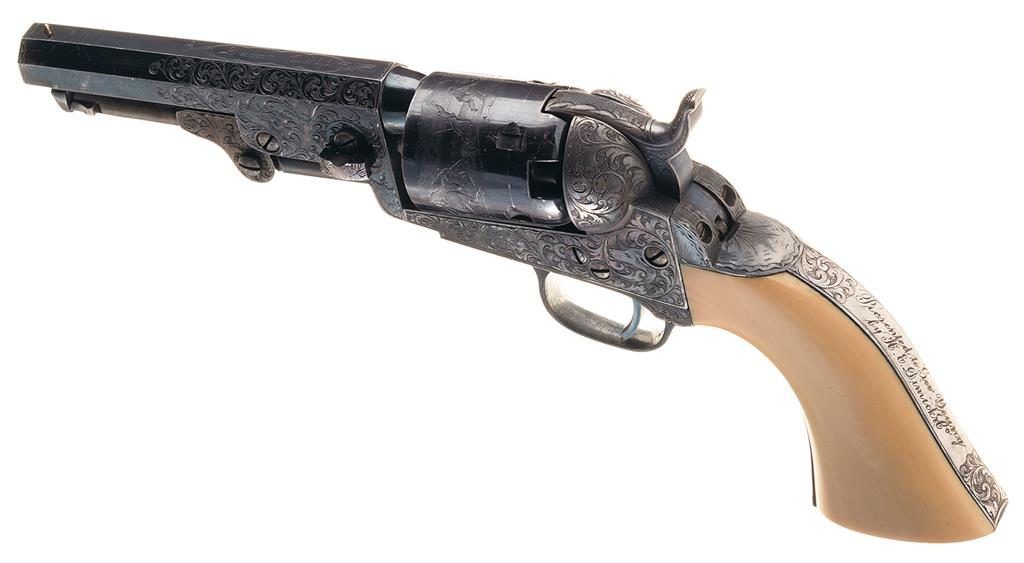Old Guns: What Are They?
Who of us doesn’t love an old gun? Whether you appreciate their look, design, history, reliability, country of origin, mechanism, or the “they don’t make ‘em like that anymore” factor, these firearms have an undeniable appeal for numerous reasons. Let's just what makes a gun an “old gun”? Let’s look at the definitions and some different types you may see.

Definition: Old Guns
Legally speaking, the Bureau of Alcohol, Tobacco, Firearms and Explosives (BAFTE, often referred to as the ATF) has some very specific definitions for what constitutes different categories of firearms. These guns are given certain protections and privileges due to their collectable nature. Many old guns that are considered antique firearms may or may not have a serial number.
- Antique Firearms In short, antique firearms are guns that were made in or before 1898, use a primitive ignition system (several of which are detailed later in this article), or use ammunition that is no longer commercially available. The story goes that renowned, Dallas-based gun dealer Red Jackson helped to determine the benchmark of 1898. His opinion was sought out by a government committee reviewing the Gun Control Act of 1968. It is said that he chose this year based on the success of the Mauser 98.
- Curio & Relic Curio & Relic firearms (also referred to as C&R) are recognized as having an interest to collectors that goes beyond the typical uses of a firearm, such as sporting or defensive purposes. These guns must meet one of three criteria:
- Firearms which were manufactured at least 50 years prior to the current date, but not including replicas of such firearms;
- Firearms which are certified by the curator of a municipal, State, or Federal museum which exhibits firearms to be curios or relics of museum interest; and
- Any other firearms which derive a substantial part of their monetary value from the fact that they are novel, rare, bizarre, or because of their association with some historical figure, period, or event.
So, if your gun is over 50 years old, congratulations! You officially own a C&R firearm. For more information on what the ATF considers a Curio & Relic and the privileges extended to them, you may read the section on the ATF’s webpage.
- Modern Any gun that is not an antique firearm or a C&R, is considered “modern” and subject to any and all state and federal rules regarding firearms.
Types of Old Guns
Old guns built 50, 100, 200 or more years ago falls into the "old guns category". They can be something like old Winchester rifles, built in the United States, or other parts of the world. Or any old firearms including rifles and shotguns, black powder guns, antique guns, single action revolvers, flintlocks and others.
Firearms have seen countless innovations since their debut. Statues depicting the earliest guns date as far back as 1128 A.D. Here are a few of the most significant stages of development.
Matchlock Firearms

Developed in the mid to late 15th century, matchlocks were the first firearms that used a mechanical device to ignite the gunpowder. They did so by mechanically lowering a length of a slow burning fuse (the match) into a priming pan full of gunpowder. Used commonly in Europe and Japan, these were the first firearms to be a key component on a battlefield.
Wheelock Firearms

These were mechanically complex firearms that hail back to the early 16th century. It was fired by winding a large wheel which was under spring pressure. When ready to fire, an arm holding a piece of fool’s gold was lowered onto the wheel. Upon pulling the trigger the wheel would spin, creating sparks and igniting the gunpowder.
These were much more reliable than matchlocks and much more concealable, a characteristic beneficial to hunters and soldiers alike. Wheellocks were quite expensive to produce so their popularity suffered, though they were in use for over 200 years. Click here to find out more about wheellocks.
Flintlock Firearms

Flintlocks developed over a long time and each new change in development brings with it its own name. You may also hear terms such as snaphance (or snaphaunce), miquelet, dog lock, boxlock, and so on. While these are very specific terms, generally if an antique firearm slams a piece of flint into a piece of steel in order to create sparks and light gunpowder, one may use the umbrella term of “flintlock.”
As you can already imagine, this covers a wide range of designs, countries, and time. The simplicity, reliability, and inexpensive nature of flintlocks saw them in use from their introduction in the early 17th century until the mid-1800s – over 200 years!
Percussion Firearms

Percussion firearms were the first improvement to firearms in over 200 years. They operate much the same way as previous old guns, but instead of using a flint or wheel to generate sparks, percussion firearms used a new invention called the percussion cap. Functioning much like the “cap” on a toy cap gun, percussion caps resembled a tiny brass cup that was placed onto the firearm when ready to fire.
Upon pulling the trigger, a small hammer would strike the percussion cap, exploding it and creating sparks to ignite the gunpowder. These were more reliable than flintlocks and saw use from the invention of the percussion cap in the early 19th century until they began to phase out with the invention of the self-contained metallic cartridge in the mid-1800s. Percussion arms still see use today among hobbyists and many states make provisions for hunters who wish to use their “muzzleloaders.”
These are the essentials to know for old guns, but they are far from comprehensive. As technologies and materials changed people came up with an incredible amount of variations and innovations for how to improve their firearms. Some were destined for obscurity, but some designs, like those listed here, have become part of history and shaped the world as we know it.
At Rock Island Auction we specialize in old guns. Some not only collectors go beyond the firearms themselves and collect guns and ammo. You can find thousands of old antique guns in almost every gun auction we hold. Check out our catalog, or look at our upcoming gun auction schedule here today.

If you like reading about old guns – both the popular and unusual – check out our past blogs.
